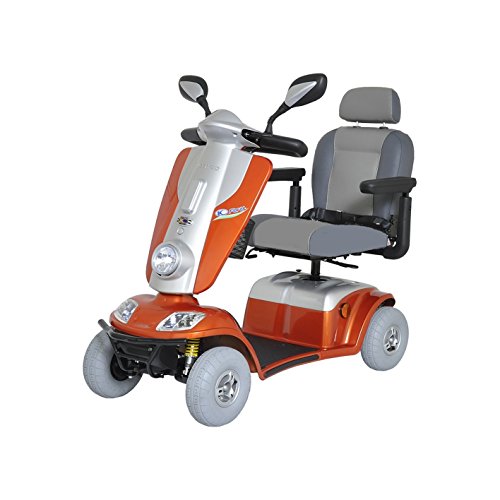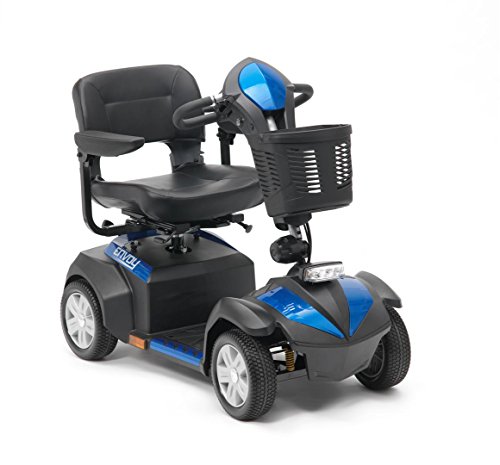How Mobility Scooter Class 3 Is A Secret Life Secret Life Of Mobility …
페이지 정보
Writer Anya Mitten Date24-07-21 10:56 View237회 Reply0건본문
| Section | |
|---|---|
| Question language | Korean |
| Response language | |
| Public/Secret | Public |
| Response deadline | |
| State | Unreceipted |
 Mobility Scooter Class 3
Mobility Scooter Class 3Class 3 scooters are able to travel at 8mph on the roadway. However, they are not permitted to operate on bus lanes or "cycle only" lanes. Like cars, they must be registered to use on roads and require road tax and insurance.
Take into consideration your lifestyle and routine when deciding on the scooter that is right for you. Consider factors such as the weight capacity, battery range and terrain compatibility.
Options for customisation
Mobility scooters come in a variety of colors and designs. Users can customize their scooters with a range of accessories that can meet their requirements. These include seating options, storage solutions backrest designs, as well as lighting features.
Modifying your scooter isn't only stylish and practical but it can enhance its safety and efficiency. It is crucial that the accessories selected are compatible with the model of scooter and are of high-quality. Also, users should consider their individual mobility requirements and riding habits when selecting scooter accessories.
For instance, certain accessories could be suitable for outdoor use on rough terrains, while others are better suited to indoor areas. It is crucial to pay attention to the legal conditions. Some areas have restrictions on using mobility scooters on pavements and roads.
The correct class of mobility scooter can make a huge difference to the quality of your life and the amount you can get out of it. A class 2 scooter works well for short journeys on footpaths or shopping malls. A class 3 scooter is suitable for longer trips on public roads and can be fitted with more batteries.
A class 4 mobility scooter is suitable for use on roads and can be driven at speeds of up to 8 mph, making it an ideal option for trips that last longer. These scooters come with additional features, like larger mirrors and turn signals, which will help you navigate traffic in a safe manner.
While mobility scooters of class 4 is able to be driven on roads, some areas require you to register the vehicle and provide evidence of your eligibility to Drive Medical Sport Rider: 3-Wheeled Mobility Scooter. This is usually based on your eyesight test and a doctor's note. You may also be required to pay insurance and taxes. You can avoid these problems by renting a motorbike from a company that specializes in this type of service. These companies offer more than just scooters. They also can assist you with other travel needs like booking accommodations and making arrangements for transfers. They can also assist you to get Medi-care coverage.
Mobility enhancement
In addition to providing an enjoyable ride, class 3 mobility scooters also feature an array of safety and comfort features. They include anti-tip mechanisms that provide stability on inclines and uneven surfaces as well as indicators and horns that improve communication and visibility on the road. They are usually constructed with sturdy frames that can take on rough terrain or outdoor conditions.
Moreover, class 3 scooters are usually larger than their Class 2 counterparts. They can thus accommodate a larger range of accessories and other items. They can be disassembled, making transporting and storing them easier. Class 3 scooters are great for those who want to travel long distances and enjoy outdoor adventures.
If you're looking to get a more basic model, you could choose a Class 2. This kind of scooter has a a maximum speed of 4mph and is specifically designed to be used on pavements and indoors. It's ideal for shopping trips, navigating in dense areas, as well as for short outdoor journeys. Class 2 scooters are smaller and lighter compared to their class 3 counterparts which makes them more mobile. Some fold up automatically for easy transport and storage.
Alternatively, you can choose to upgrade to an official class 5 mobility scooter. It can achieve the speed of 8mph, and is suitable for use on roads. It's fitted with features for use on roads like indicators, lights, and a horn, and requires registration for use on roads. Class 5 mobility scooters are also larger and require a larger battery than their class 3 equivalents.
The primary distinctions between a class 2 and class 3 mobility scooter is their speed limits, the inclusion of features for road use and the minimum age requirements for usage. Knowing these distinctions can assist you in determining which type of mobility scooter suits your lifestyle and requirements best. This will ensure that your scooter can be legally used, avoiding legal complications and maintaining safety. If you're not sure what scooter to purchase you can always speak with the manufacturer or a certified mobility expert to assist you.
Battery life is extended
The longevity of batteries for mobility scooters depends on a number of factors, including usage frequency and charging habits. Frequent use can reduce the battery's lifespan due to the fact that it requires numerous charging and discharge cycles. It is essential to follow good charging methods, including avoiding full depletion before recharging and not leaving the battery at 100% for extended periods of time. It is also important to keep the batteries in a cool, dry place.
The type of battery that is used in a mobility scoot also affects the performance and maintenance requirements. Lead acid batteries are a popular and inexpensive option, but they require regular care to function optimally. Gel batteries and absorbent-glass mat (AGM) are sealed, maintenance-free options that offer superior performance in various temperatures. Lithium-ion batteries are a light and longest-lasting option, however they're also expensive.
In addition to the battery type and size and the weight of the driver and any baggage or shopping can influence how much range a mobility scooter could get on one charge. When driving on hills or uneven terrain can drain the battery quicker than driving on flat, even surfaces. The amount of power a driver puts into acceleration is an additional aspect to take into account, since rapid accelerations consume more energy than continuous driving.
A few other maintenance tips to keep in mind are keeping the tires properly inflated to reduce unnecessary power drain and regularly inspecting the battery terminals for signs of corrosion. It is also a good idea to use an insulated cover when storing a scooter in cold weather, as extreme temperatures can cause batteries to degrade and reduce their life span. These steps can help to ensure the batteries for mobility scooters in a class 3 scooter will last for many years to come. This will allow the user to have a pleasant and convenient ride that can take them to where they want to go and back again. Contact us today if you are looking to purchase mobility scooters. We are happy to answer any questions you may have and guide you through the warranty claim process if required.
More affordable
The class 3 mobility scooter is typically more expensive than the class 2 model, however it has many benefits over the long term which can offset the initial investment. They have larger batteries and more advanced motors than the class 2 models. This lets them travel further distances on a single charge. Furthermore, they're designed to withstand greater use and come with safety features that make them more reliable. These benefits can translate to significant savings in the long-term since they can reduce the need for frequent battery replacements and repairs.
The right mobility scooter class is determined by your lifestyle and personal requirements. If you'll primarily be using it indoors the class 2 model might suit you best. They are light and compact. They can be easily disassembled and transported in vehicles. They also have smaller batteries that are easier to take off to charge. However, their lower speed limits and size can limit them for road trips and outdoor cruising.
On the other hand an mobility VELECO ZT15-3 - Sleek LED Scooter - https://www.mymobilityscooters.uk/products/veleco-zt15-3-mobility-scooter-led-speedometer - class 3 has a wider range of uses. They can travel at 8mph, and are capable of handling rough terrains. They are also equipped with safety features such as indicators, a horn, and rearview mirrors to ensure the user's visibility on roads. They are suitable for use on roads although certain areas may have specific requirements for drivers to adhere to such as paying vehicle taxes and displaying a license plate.
 The class 3 mobility is also more affordable than buying a brand new vehicle, particularly when you plan to keep for a long period of time. You can also purchase accessories to boost the performance of your scooter, for instance a rearview camera or headlight. You can also install the wig-wag feature, which lets you regulate the direction and speed of your scooter by pressing one button. This feature is ideal for people who have to quickly change direction or turn. You can find these options and more by talking with an expert at a mobility scooter store.
The class 3 mobility is also more affordable than buying a brand new vehicle, particularly when you plan to keep for a long period of time. You can also purchase accessories to boost the performance of your scooter, for instance a rearview camera or headlight. You can also install the wig-wag feature, which lets you regulate the direction and speed of your scooter by pressing one button. This feature is ideal for people who have to quickly change direction or turn. You can find these options and more by talking with an expert at a mobility scooter store.Comment list
There's no reply